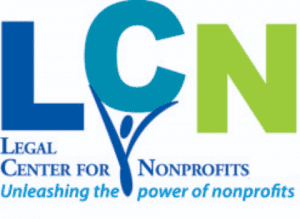Conflicts of interest are rooted in the fiduciary duty of loyalty owed by directors and officers to their nonprofit corporations. The duty of loyalty requires directors and officers to act at all times in the best interests of the nonprofit. (Employees also have a duty of loyalty to their employer, whether nonprofit or not.)

Conflicts run counter to charitable purpose, in that serving private interests, as occurs in a conflict of interest situation, is inconsistent with furthering charitable purposes. Private benefit[1] occurs when a nonprofit’s funds or other assets benefit a private party who is not within the scope of the nonprofit’s charitable work. Charities must serve a public interest, not a private interest.
In general, conflicts of interest in the nonprofit sector are not illegal, but they must be recognized and managed. A conflict of interest occurs when a director, officer, key employee, or other person in a position to influence the nonprofit (an “insider”) may benefit personally in some way from a transaction or relationship with the nonprofit organization that he or she serves. This definition may seem straightforward, but recognizing a conflict of interest can be difficult. In addition, conflicts are often viewed in only financial terms, but a benefit can also take the form of an advantage that is not financial, such as access to information or opportunity.
Nonprofit directors who are appointed to serve on a board of directors by another nonprofit face a particular form of conflict. If an individual is a director on both the appointing board and the receiving board, an inherent conflict exists because the director owes a duty of loyalty to both organizations. At whichever board table he or she is sitting, the director must balance carefully the interests of the other nonprofit.
Conflicts of interest exist in a spectrum:
- An actual conflict of interest exists when a current transaction before the board may benefit an insider;
- An apparent conflict of interest exists when a transaction may be viewed by the public or an outsider as being beneficial to an insider.
- A potential conflict of interest exists when a transaction could benefit an insider.
The following situations present conflicts of interest:
- A board member proposes to provide a service to the nonprofit for which he or she will be compensated. Another common variation is the board member who is also the nonprofit’s landlord (or landlord’s representative), or the board member who owns a business desiring to provide services to the nonprofit.
- Nonprofit A’s board member is appointed to A’s board by the board of Nonprofit B, on which he/she also serves, or by whom he/she is employed. This situation results in conflicted loyalties. If the two nonprofits offer similar services, they may seek similar grant or contract opportunities, for example.
- Nonprofit A’s board member serves on the board of Nonprofit B where Nonprofit B may be in a position to make grants to Nonprofit A or may enter into contracts with it.
- A board member is also a client or employee of the nonprofit on whose board he/she serves; here, the board member may have a direct interest when the board must establish fees for services or pay rates, for example.
- A board member of the nonprofit is the spouse, parent, or other relative of an employee or client of the nonprofit.
- Nonprofit A’s board member serves on another nonprofit board that may be in a position to compete with A for clients, donors, or grants.
The Internal Revenue Service recommends that nonprofit boards adopt Conflict of Interest policies to protect the nonprofit from any appearance of impropriety and to guard against the inappropriate redirection of charitable funds. The hallmarks of a strong conflicts policy and procedure include the following:
- Requirement to disclose actual or potential conflicts of interest as they arise throughout the year;
- Disclosure of all relationships that may result in conflicts of interest;
- Requirement that the conflicted individual be absent while the board discusses and votes on the conflict (simple abstention is not sufficient);
- Evaluation of the conflict by the board of directors, as to whether the transaction may still be in the best interests of the nonprofit, or whether an alternative can or should be found; and,
- Documentation of the board’s decisions related to, and management of, disclosed conflicts.
As noted above, conflicts of interest in the
nonprofit sector are not illegal. Boards
have discretion to decide how to manage any conflict that may arise. However,
as nonprofit organizations strive for transparency and accountability, a strong
conflict of interest policy provides important protection for the nonprofit—but
only if the board of directors follows the policy and procedure to the letter
at all times.
[1] Tax law recognizes two types of situations in which a private individual benefits inappropriately from the activities of the nonprofit, distinguishing between people outside the organization and insiders. When the person benefitting is a board member, key employee, or other individual in a position to influence or control the organization—an insider—this type of private benefit is known as private inurement; when excessive, it can result in significant fines and penalties to the nonprofit and individuals involved. For simplicity in this Introduction, both private inurement and private benefit—where “outsiders” benefit—are referred to as “private benefit”.
